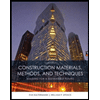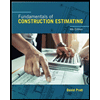
Concept explainers
A suitable thickness of the concrete pavement if the working stress of the concrete is
Answer to Problem 20P
The suitable depth of concrete pavement is
Explanation of Solution
Given:
Design life is
Annual rate of traffic growth is
Sub grade
Stabilized sub-base is of
Modulus of rupture of the concrete is
Traffic volume data on the highway indicate that the AADT during the first year of operation is
The pavement has aggregate interlock joints (no dowels) and a concrete shoulder.
Formula used:
The design equivalent single axle load is given by,
Here,
The total ESAL is given by,
Here,
The stress ratio is given by,
Here,
The damage percent is given by,
Here,
Calculation:
The design equivalent single axle load for
Substitute
The design equivalent single axle load for
Substitute
The design headwater depth is calculated as,
Substitute
The sub grade value of
From table 20.22, "Deign
Assume a slab
From table 20.24, "Equivalent stress values for single axles and tandem axles" of book "Traffic and highway engineering" equivalent stress values can be obtained and for
The stress ratio is calculated as,
Substitute
From table 20.27, "Erosion factors for single axles and tandem axles (doweled joint, concrete shoulder" of book "Traffic and highway engineering" for
From figure 20.26, "Allowable Load Repetitions for Fatigue Analysis Based on Stress Ratio" of book "Traffic and highway engineering" for
Thus, the Fatigue analysis for
From figure 20.27, "Allowable Load Repetitions for Erosion Analysis Based on erosion factors" of book "Traffic and highway engineering" for
From figure 20.26, "Allowable Load Repetitions for Fatigue Analysis Based on Stress Ratio" of book "Traffic and highway engineering" for
From figure 20.27, "Allowable Load Repetitions for Erosion Analysis Based on erosion factors" of book "Traffic and highway engineering" for
The table showing the allowable repetitions for
| Load | Fatigue analysis | Erosion analysis |
| | Unlimited | Unlimited |
| | | |
Table (1)
So the
Assume a slab
Calculate the equivalent stress.
From table 20.24, "Equivalent stress values for single axles and tandem axles" of book "Traffic and highway engineering" equivalent stress values can be obtained and for
The stress ratio is calculated as,
Substitute
From table 20.27, "Erosion factors for single axles and tandem axles (doweled joint, concrete shoulder" of book "Traffic and highway engineering" for
From figure 20.26, "Allowable Load Repetitions for Fatigue Analysis Based on Stress Ratio" of book "Traffic and highway engineering" for
Thus, the Fatigue analysis for
From figure 20.27, "Allowable Load Repetitions for Erosion Analysis Based on erosion factors" of book "Traffic and highway engineering" for
From figure 20.26, "Allowable Load Repetitions for Fatigue Analysis Based on Stress Ratio" of book "Traffic and highway engineering" for
From figure 20.27, "Allowable Load Repetitions for Erosion Analysis Based on erosion factors" of book "Traffic and highway engineering" for
The table showing the allowable repetitions for
| Load | Fatigue analysis | Erosion analysis |
| | Unlimited | Unlimited |
| | unlimited | |
Therefore, the
Conclusion:
Therefore, the suitable depth of concrete pavement is
Want to see more full solutions like this?
Chapter 20 Solutions
Traffic And Highway Engineering
- Problem 2 Two machines produce rivets for a factory job. The number of sub-standard rivets per hour by the two machines are random variables, denoted by X1 and X2. The bivariate PMF of X1 and X2, Px,x,(x1,x2), is given in the table below. X2=0 X2=1 X2=2 X2=3 X₁-0 0.07 0.05 0.02 0.01 X₁ =1 0.05 0.16 0.12 0.02 X₁ =2 0.02 0.12 0.17 0.05 X₁ =3 0.01 0.01 0.05 0.07arrow_forwardPlease provide a handwritten solution to the questionarrow_forwardPlease solve the question by hand with a detailed explanation of the steps.arrow_forward
- Please provide a handwritten solution to the questionarrow_forwardplease helparrow_forwardAS Q1/ The specific gravity of the soil is 1.41 percentage of water content by weight at field capacity and wilting point are 15% and 7% respectively calculate the equivalent moisture content as equivalent depth for 1.2m root zone : 1. at permanent wilting point 2. at field capacity 3. for ready available waterarrow_forward
- Question 6 The following figure shows peak-hour volumes for an intersection. Using Webster's method, determine a suitable signal timing for the intersection using the four-phase system shown below. Use an amber interval of 3 seconds and the saturation flow given in the table. O 100 O Phase Lime Group Saturation Flow A e 1615-> 370 3700 B 1615 1615 3700 1615 3700arrow_forwardPHF-0.91 Pedestrian volume is negligible. Question 7 A parking area with 60 bays has an initial count of 35 vehicles. The in-out survey data for 10-minute intervals is as per the table below. Complete the table, calculate the accumulation, occupancy (%), and parking load (veh.hrs) for each interval. Time (min) In Out Accumulation Occupancy Parking load (%) 0 3 10 2 4 20 1 1 30 1 3 40 1 6 50 1 4 60arrow_forwardQ3/ The following data represent the water depth in the soil of equal areas for specified field. Calculate the uniformity coefficient, efficiency and adequacy of irrigation. Net needed irrigation depth =75 mm (78-04, 79, 88, 85.21, 76,82)arrow_forward
- A (A) Q1/ It is required to apply a net depth of 120mm to a total area of 60 ha. The applied discharge is continuously 180 L/s. What must be the time of irrigation? Assume the application efficiency 85%. а Eas 85 0% tarrow_forwardThe following figure is a flexible pavement system with the resilient moduli layer coefficients and drainage coefficients as shown. If the predicted ESAL = 6x106, Reliability, R = 99%, Standard Deviation (So) = 0.45, and APSI = 2.5, select thicknesses D1, D2, and D3 in accordance with the AASHTO Guide for Design of Pavement Structures. E₁ = 400, 000 psi; a₁ = 0.42, Thickness = D₁ E₂=30,000 psi; a₂= 0.14, m₂ = 1.2; Thickness = Dz E=11,000 psi; a=0.08, m3 = 1.2; Thickness = D3 MR= 5,700 psiarrow_forwardDiagramtically show the placement, size, and spacing of temperature steels, dowel bars and tie bars in rigid pavements. Also mention their puproses in rigid pavements.arrow_forward
 Traffic and Highway EngineeringCivil EngineeringISBN:9781305156241Author:Garber, Nicholas J.Publisher:Cengage Learning
Traffic and Highway EngineeringCivil EngineeringISBN:9781305156241Author:Garber, Nicholas J.Publisher:Cengage Learning Construction Materials, Methods and Techniques (M...Civil EngineeringISBN:9781305086272Author:William P. Spence, Eva KultermannPublisher:Cengage Learning
Construction Materials, Methods and Techniques (M...Civil EngineeringISBN:9781305086272Author:William P. Spence, Eva KultermannPublisher:Cengage Learning Fundamentals Of Construction EstimatingCivil EngineeringISBN:9781337399395Author:Pratt, David J.Publisher:Cengage,
Fundamentals Of Construction EstimatingCivil EngineeringISBN:9781337399395Author:Pratt, David J.Publisher:Cengage,


